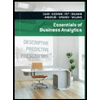One way consumers can evaluate alternatives is to identify important attributes and assess how purchase alternatives perform on those attributes. Consider the purchase of a tablet. Each attribute is given a weight to reflect its level of importance to that consumer. Then the consumer evaluates each alternative on each attribute (higher ratings indicate higher performance). A score can be calculated for each brand by multiplying the importance weight for each attribute by the brand's score on that attribute. These weighted scores are then summed to determine the score for that brand. Calculate the weighted scores for all brands. Which brand would this consumer likely choose?,,Alternative Brands,,Attributes,Importance Weight,A,B,CScreen size,0.3,5,5,7Price,0.1,7,7,3Operating System,0.3,3,3,6Apps available,0.3,3,2,4
One way consumers can evaluate alternatives is to identify important attributes and assess how purchase alternatives perform on those attributes. Consider the purchase of a tablet. Each attribute is given a weight to reflect its level of importance to that consumer. Then the consumer evaluates each alternative on each attribute (higher ratings indicate higher performance). A score can be calculated for each brand by multiplying the importance weight for each attribute by the brand's score on that attribute. These weighted scores are then summed to determine the score for that brand. Calculate the weighted scores for all brands. Which brand would this consumer likely choose?
,,Alternative Brands,,
Attributes,Importance Weight,A,B,C
Screen size,0.3,5,5,7
Price,0.1,7,7,3
Operating System,0.3,3,3,6
Apps available,0.3,3,2,4
Trending now
This is a popular solution!
Step by step
Solved in 1 steps with 1 images









